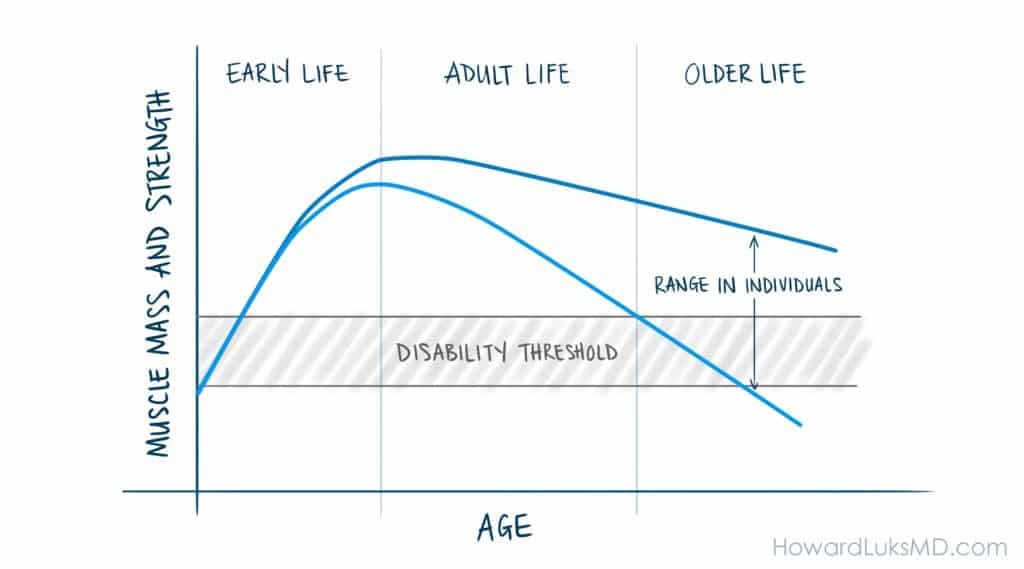We talk a lot here about cardiovascular fitness and how it's the ultimate health drug, free and effective. But muscle is at least as important, making its loss an equally serious problem, even if too often overlooked.
The technical term for muscle loss is "sarcopenia," the involuntary loss of muscle mass, and it's an evil up there with Marvel villains. Sadly, however, it is more common than some Thanosian movie characters, and it accelerates with age. But we don't have to sit idly by and watch our muscles disappear— we can slow and mitigate most of the potential loss.
Sarcopenia: Age-Related Muscle Decline
This loss of muscle mass can begin well before we turn 40 years old. Studies are clear: muscle mass declines around 3–8% per decade after the age of 30, and the rate of decline accelerates after you turn 60 (and don't even ask what happens after 75). This leads to less muscle, worse balance, and poorer mobility, which becomes a fundamental cause of and contributor to disability in older people.
To make things worse, age-related decline can be accelerated by various widespread causes. For example, Type 2 Diabetes, Metabolic Syndrome (high blood pressure, big belly, and high triglycerides), fatty liver disease, and other factors lead to a more punctuated muscle mass decline.
A quick refresher on muscle's role, and thus on why its decline causes all of this human carnage: Muscles propel us across the landscape and allow us to balance as we do so. These dual functions are crucial: propulsion and proprioception. The proper marriage of the two enables us to do all the things we want to do, from sports to shopping to simply going for a walk.
We take all of this for granted in our early years. We might hear about an aging relative that "had a fall" and see the worried looks exchanged by adults, but it was all likely puzzling. After all, that relative didn't fall out of a second-story window. They just ... fell.
But what the younger you was hearing about with talk of falls was really just sarcopenia restated. Without intervention to preserve muscle, aging humans become more prone to falls, which can lead to serious injury in fragile bones; without requisite muscle, we will no longer be able to climb stairs easily, even in our 50s and 60s. We will struggle to garden, hike, play certain sports, and remain independent, which leads to further declines.

But it is not all bad news, as you will discover in the second half of this note. We have learned a great deal about sarcopenia, its causes, consequences, and remedies.





